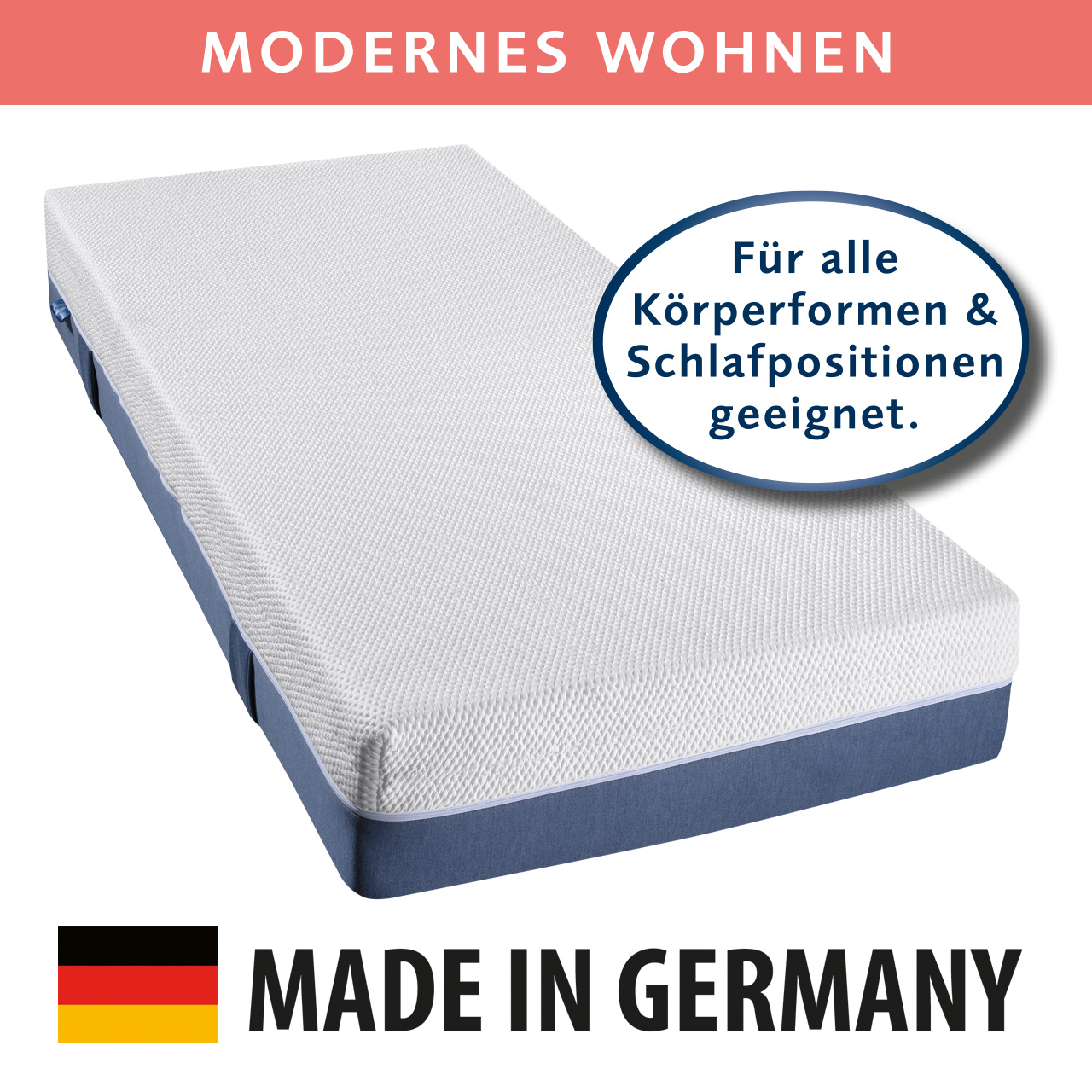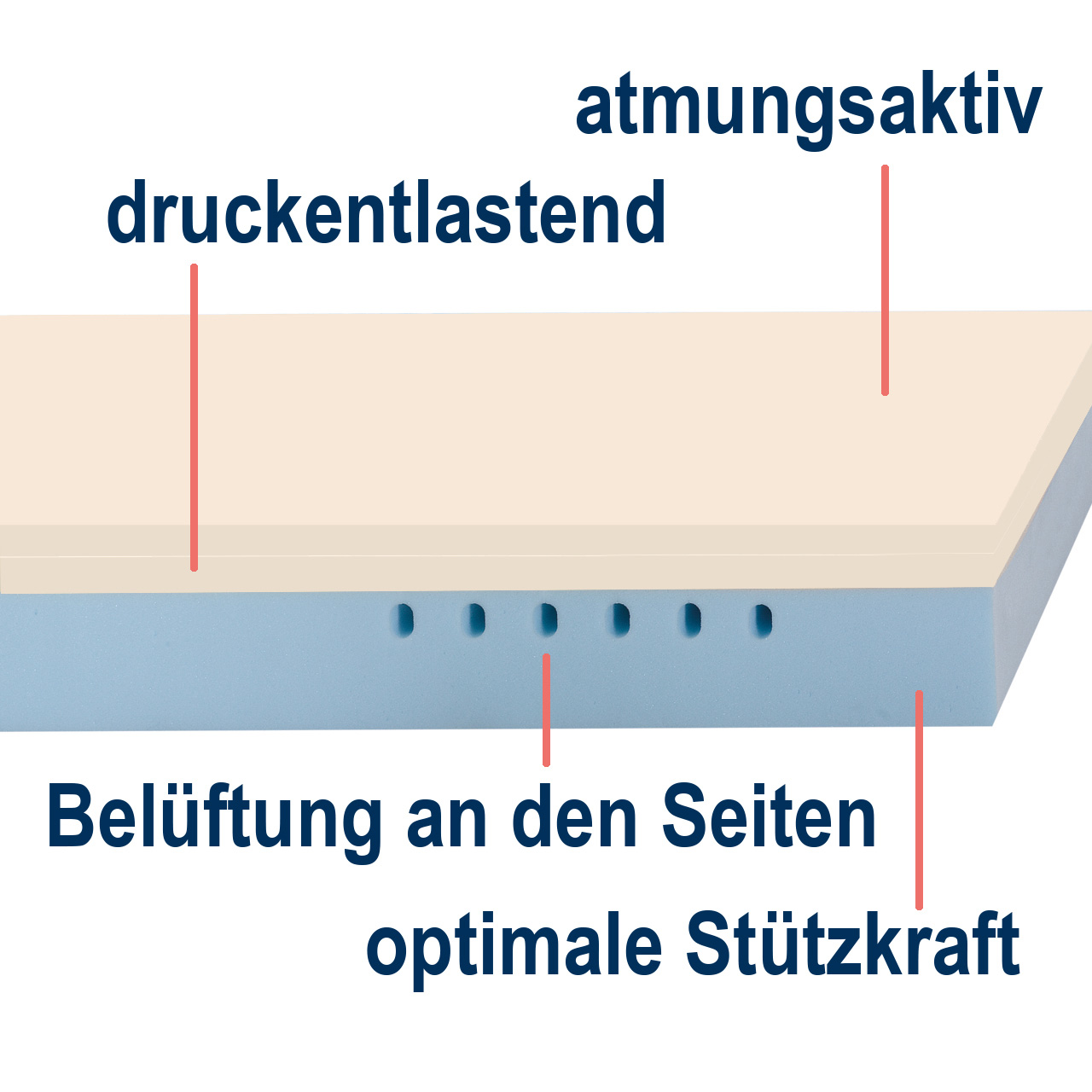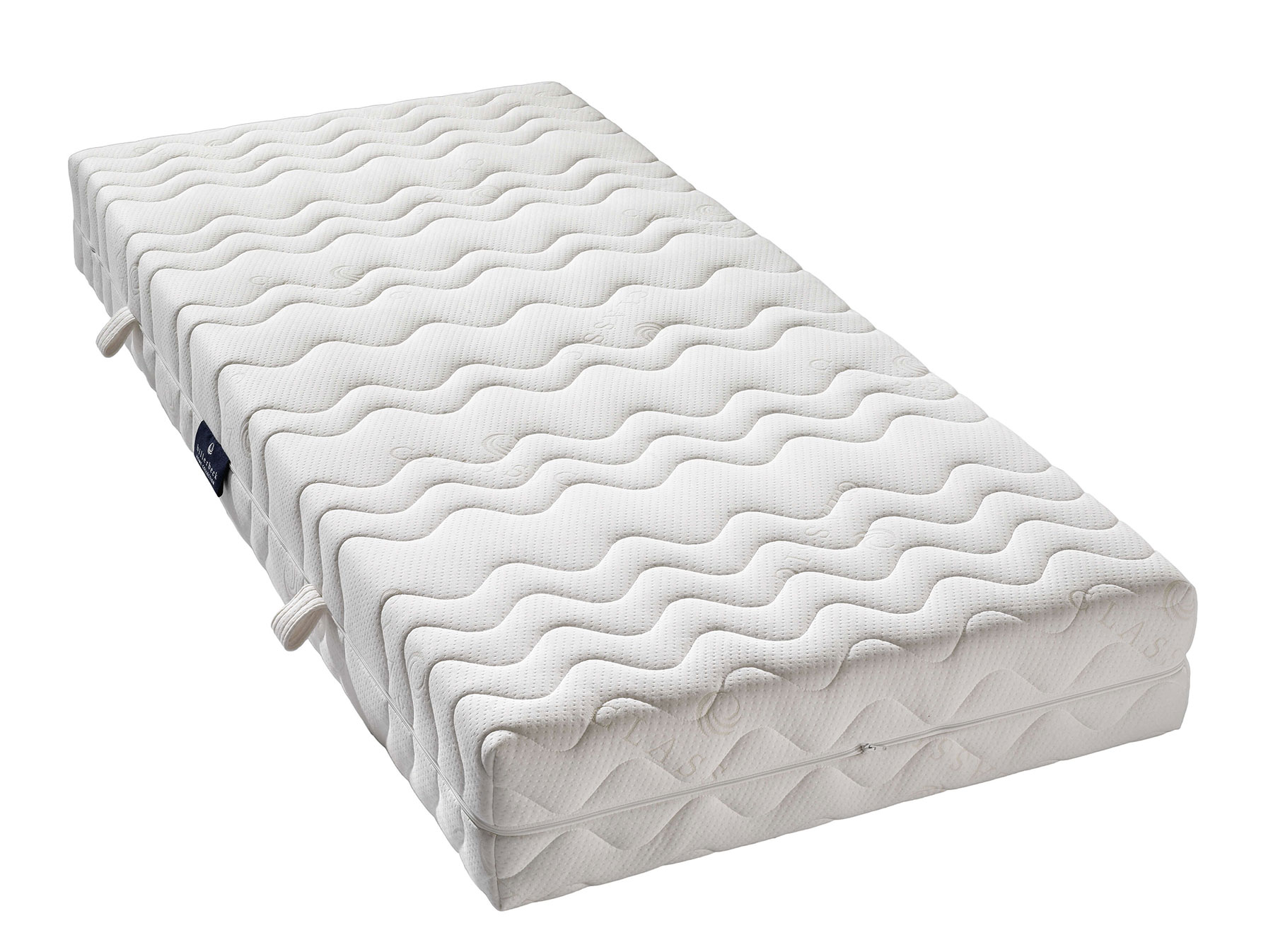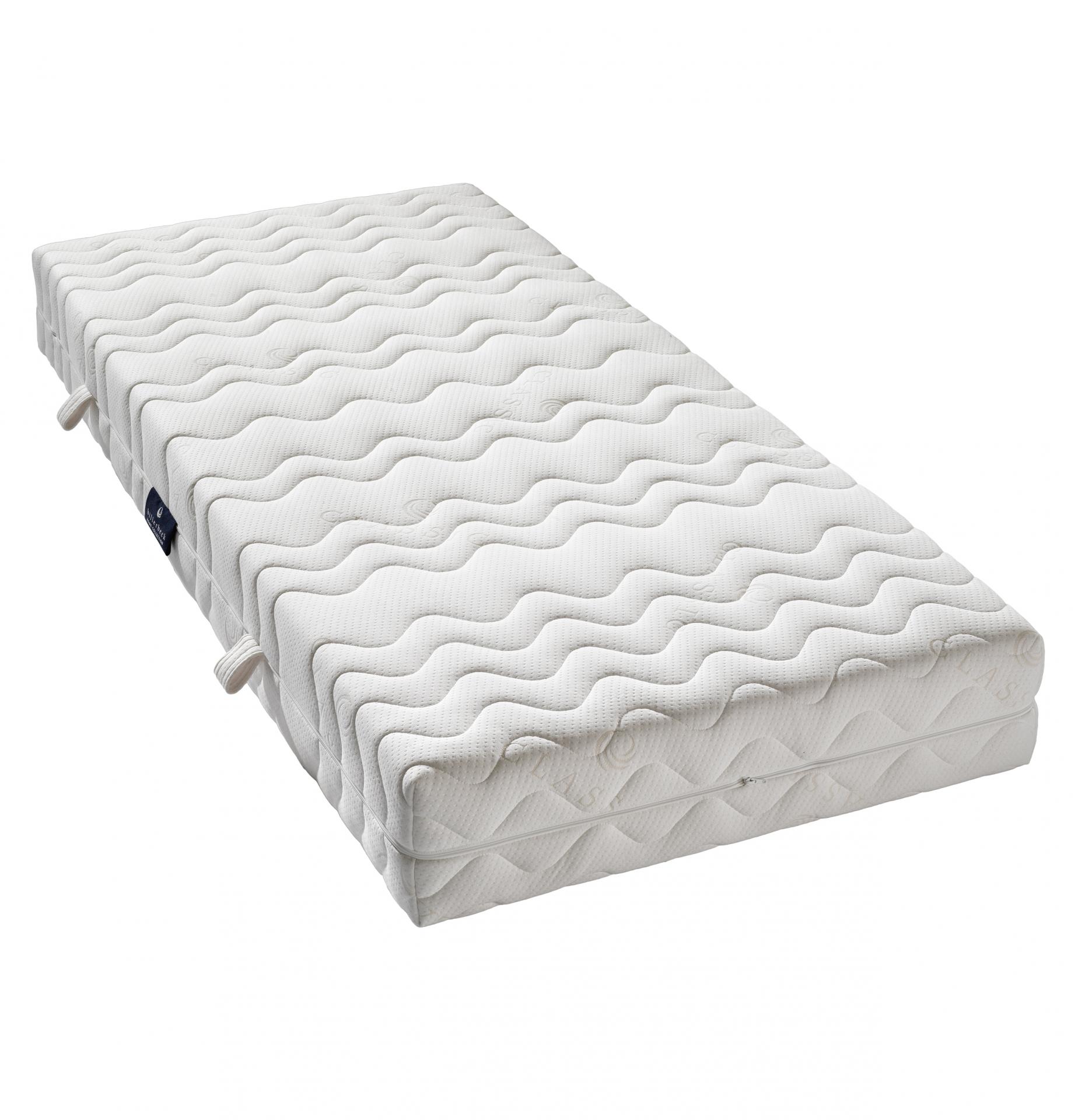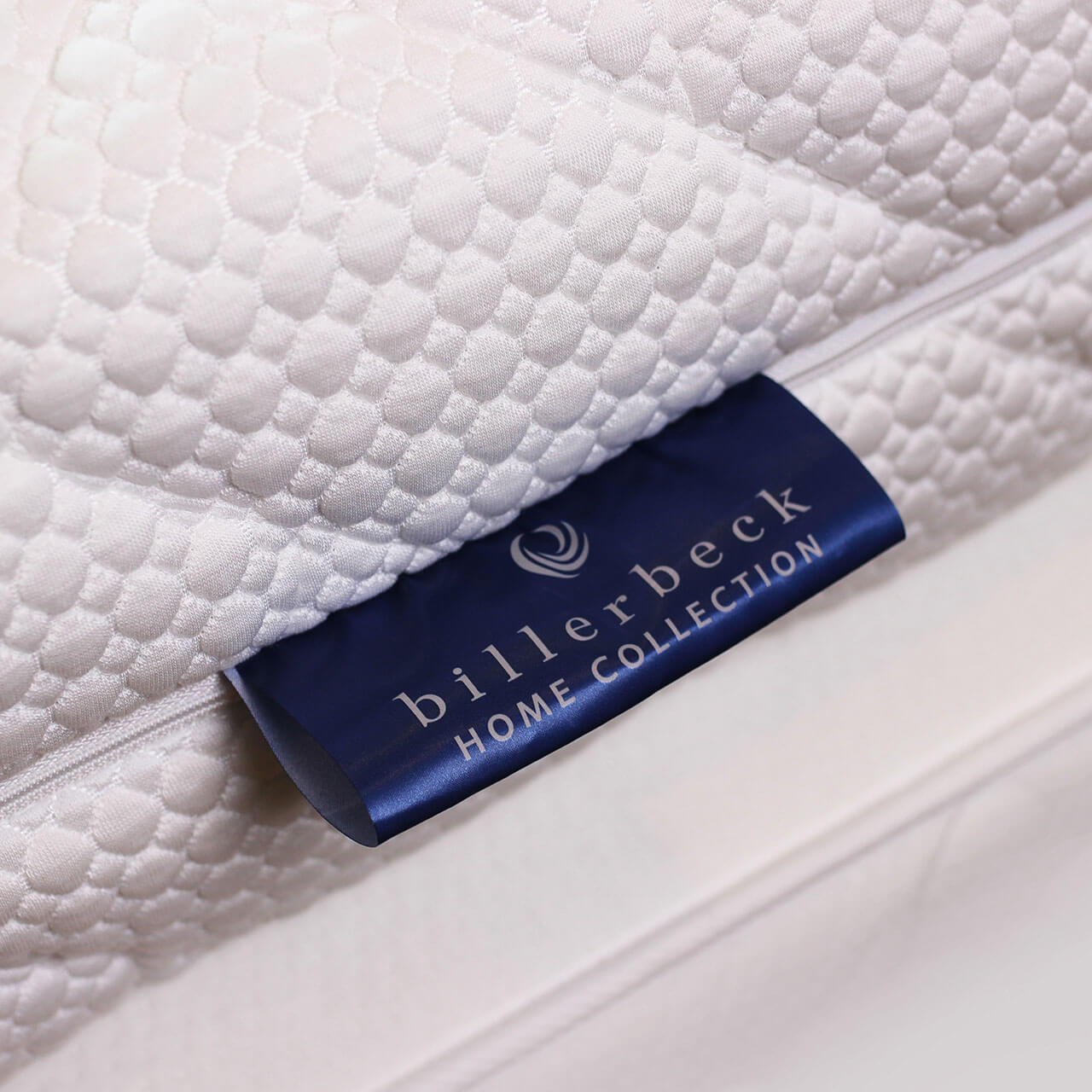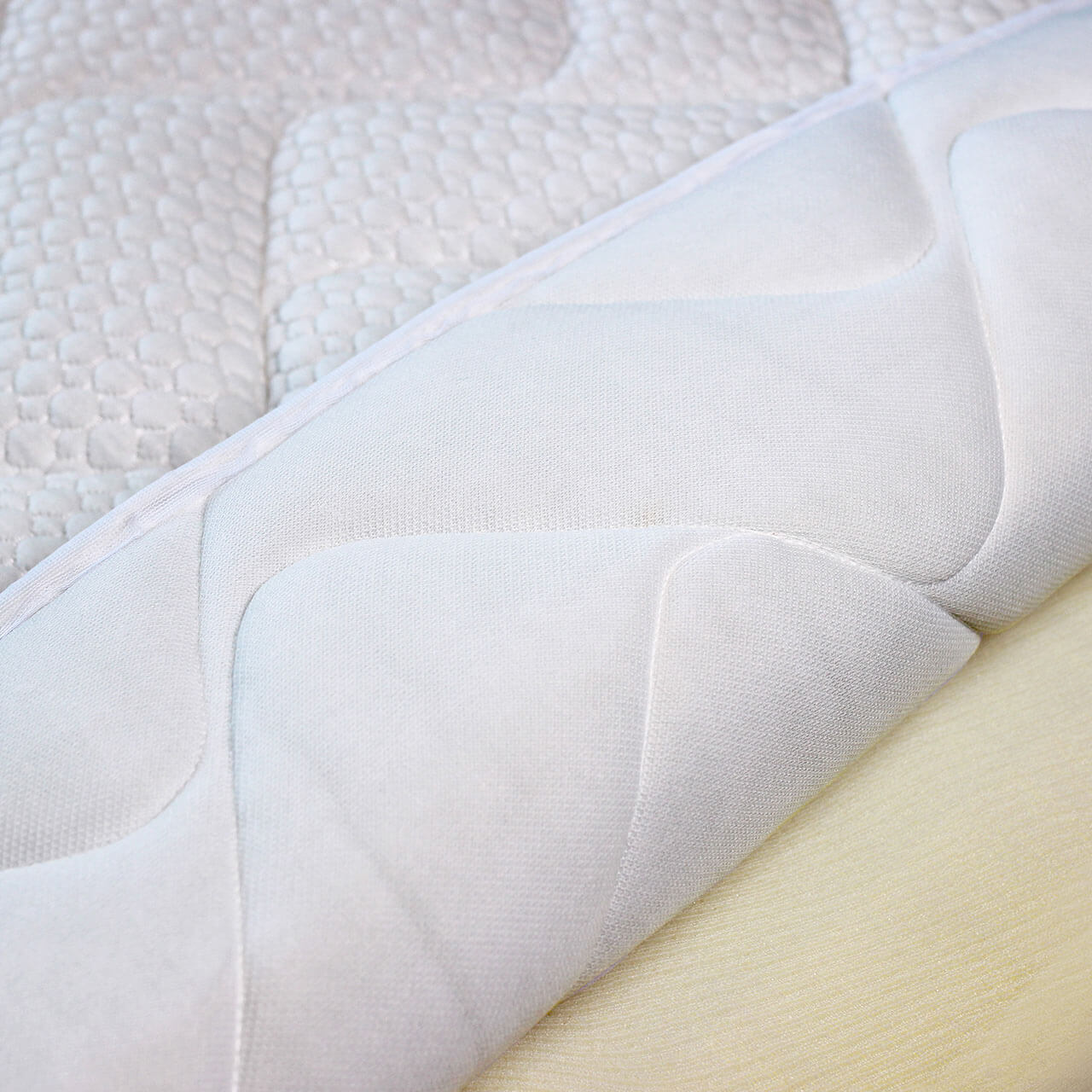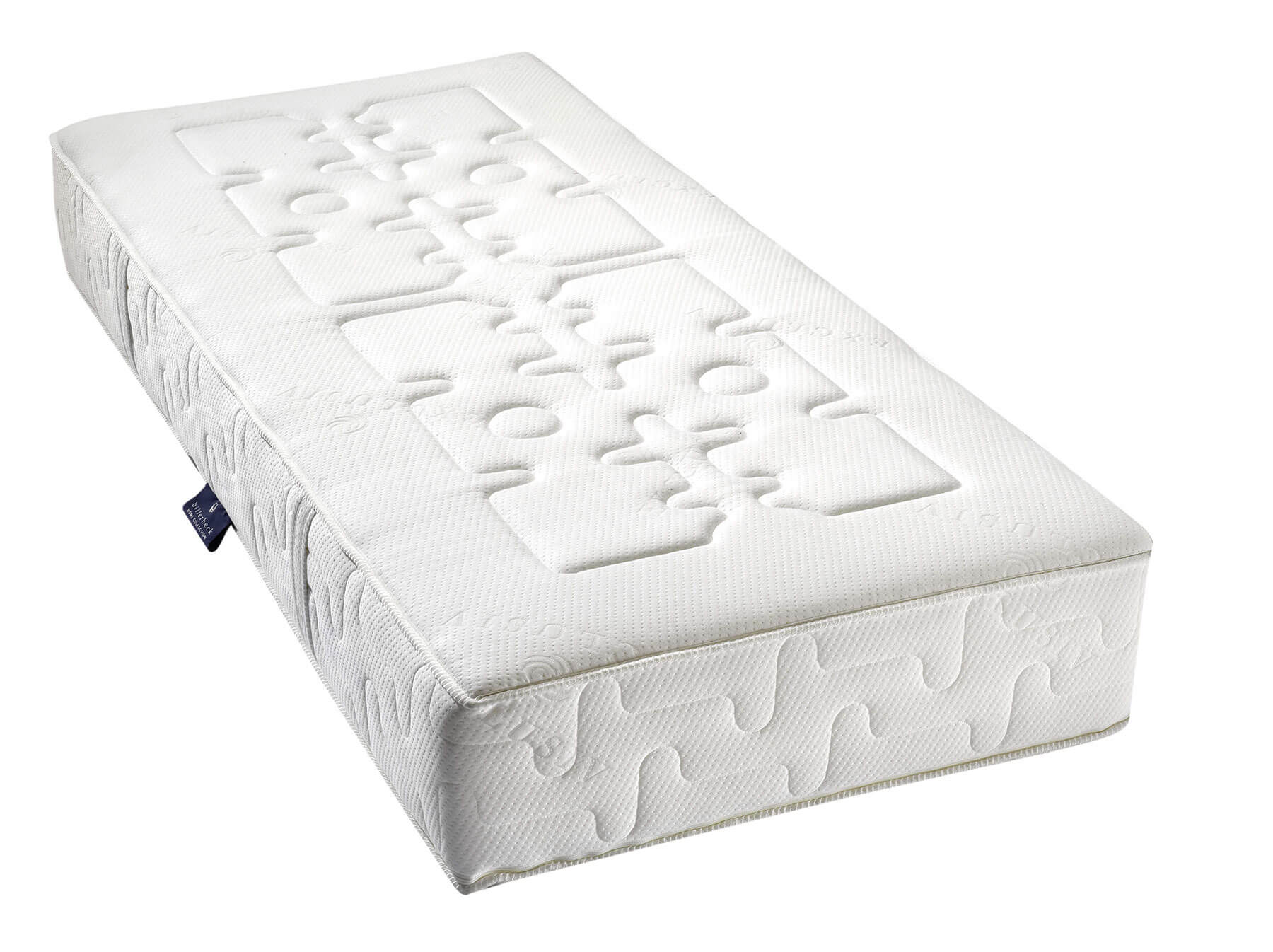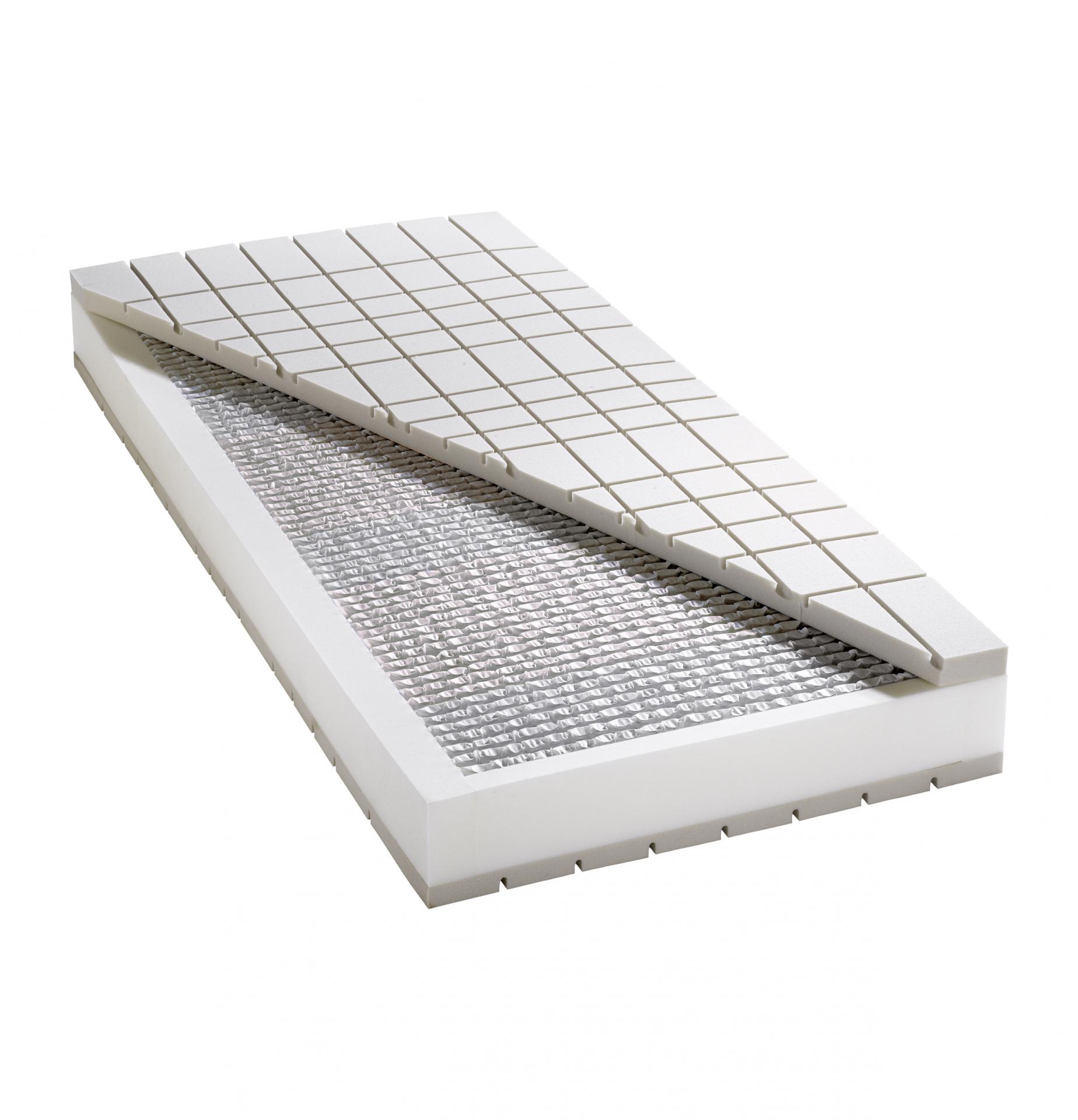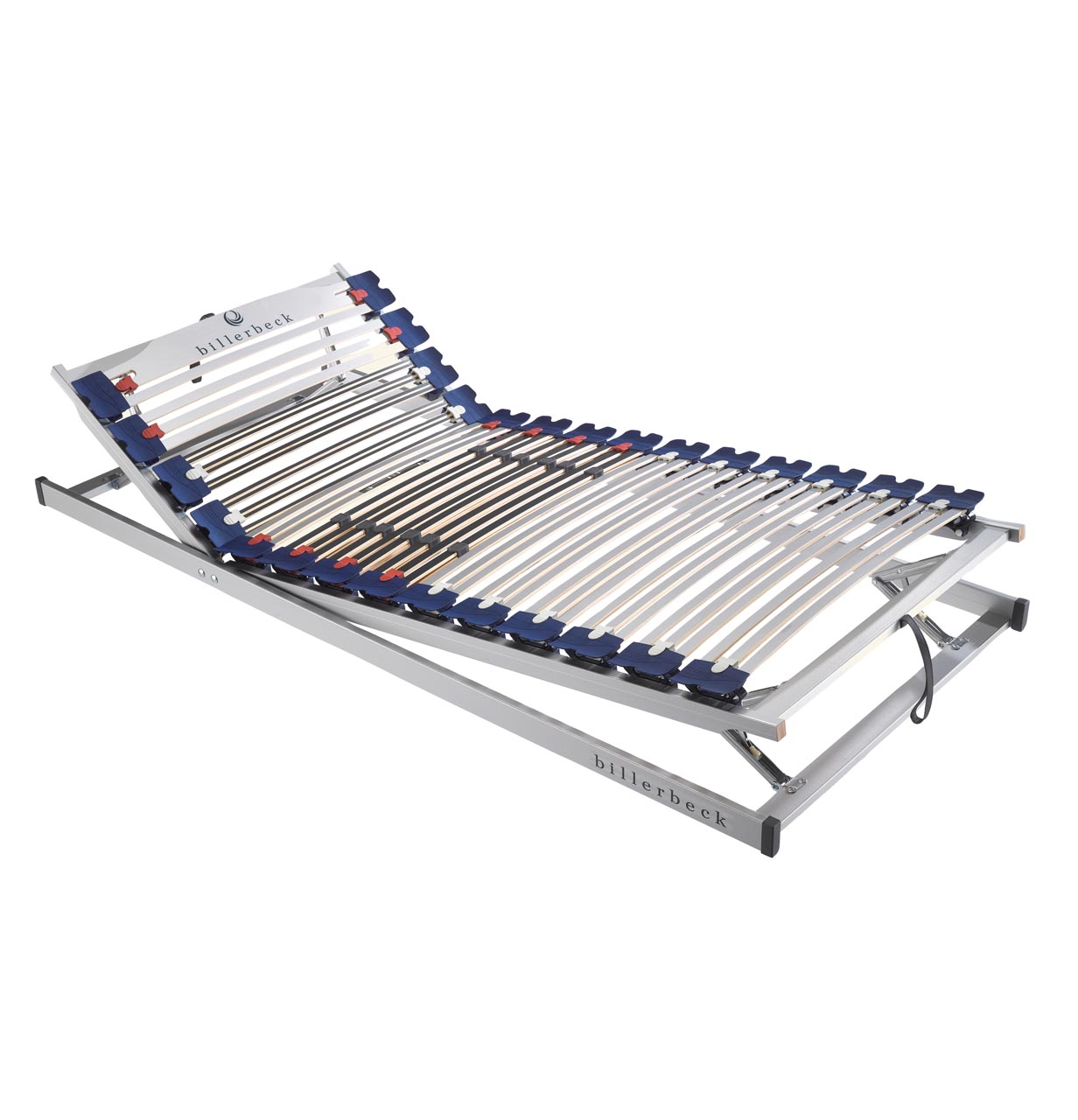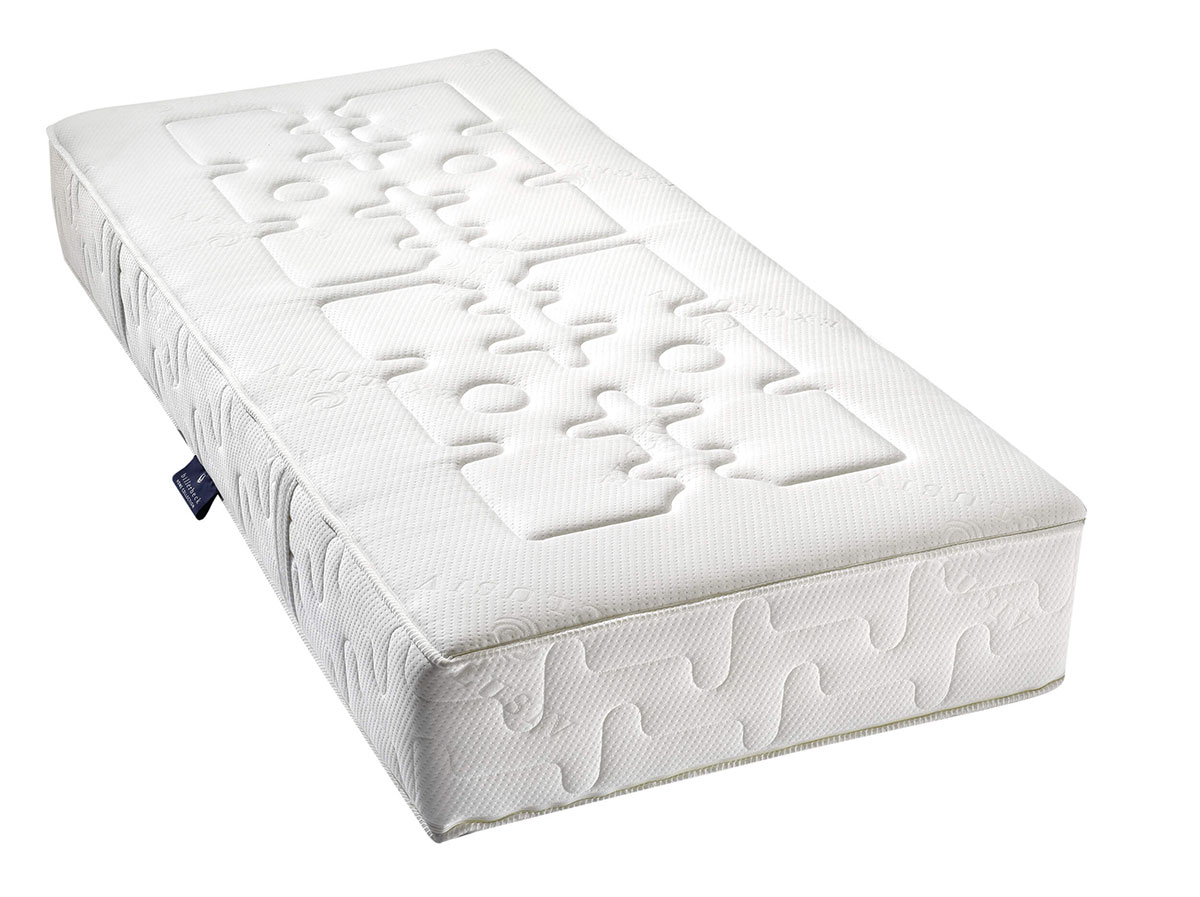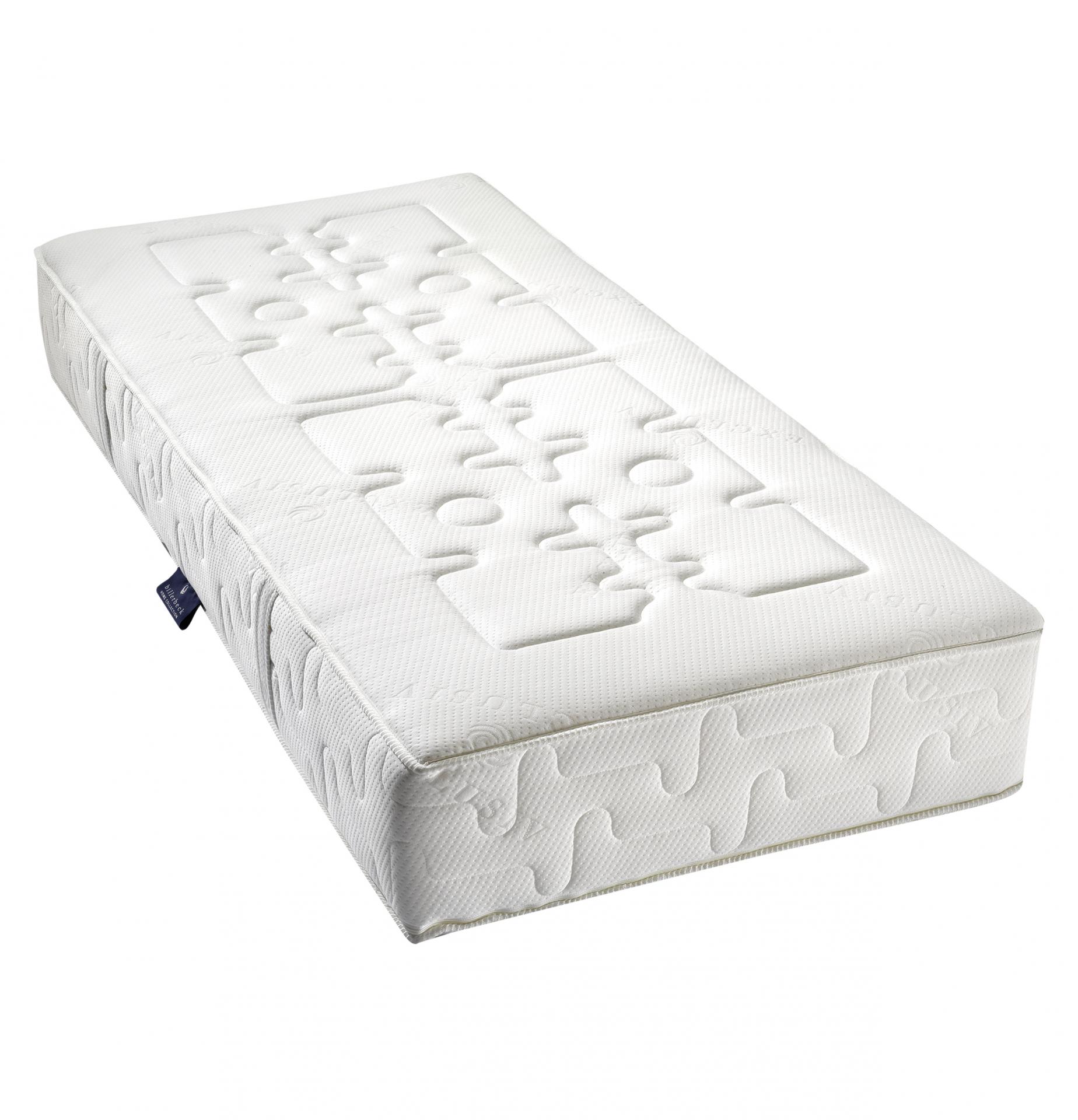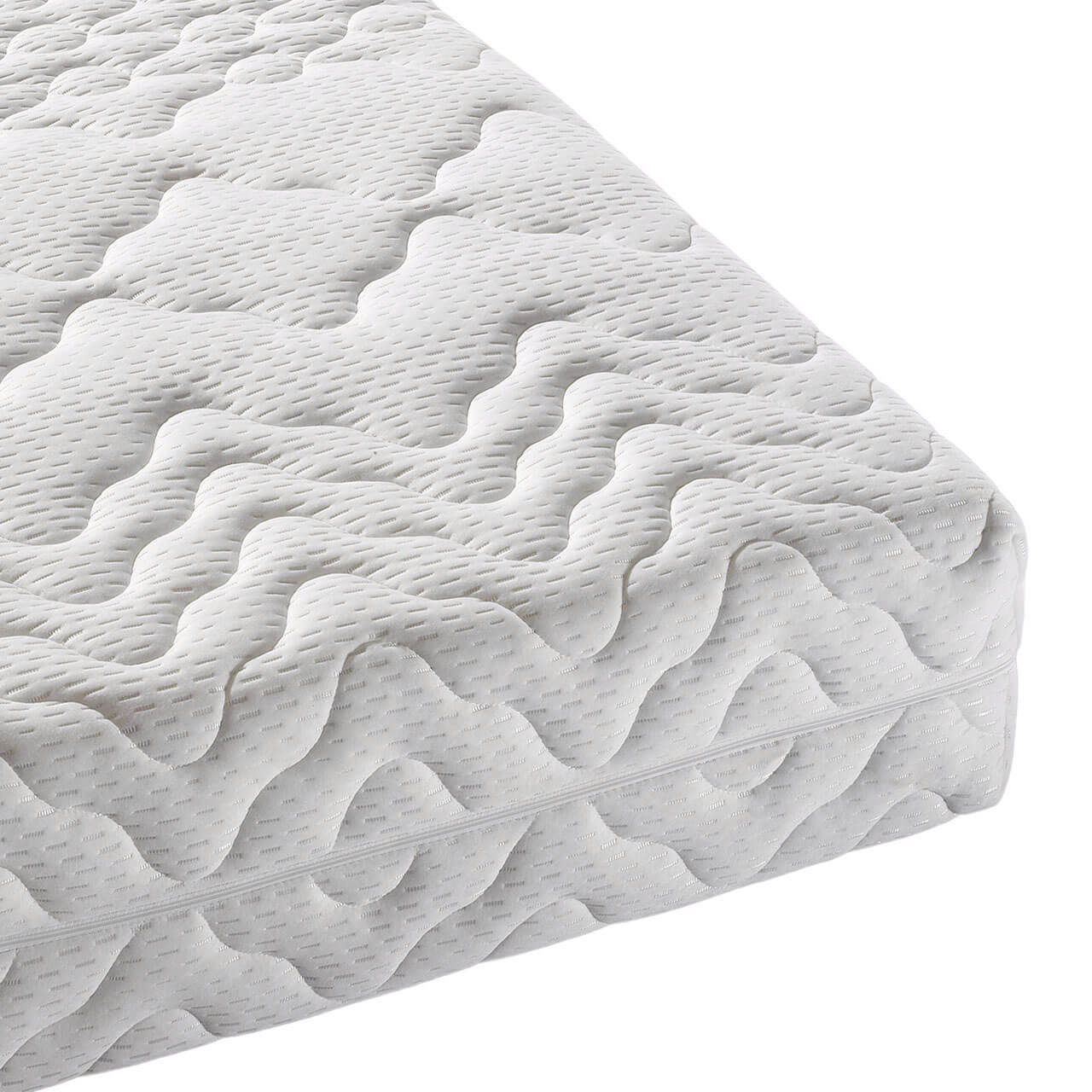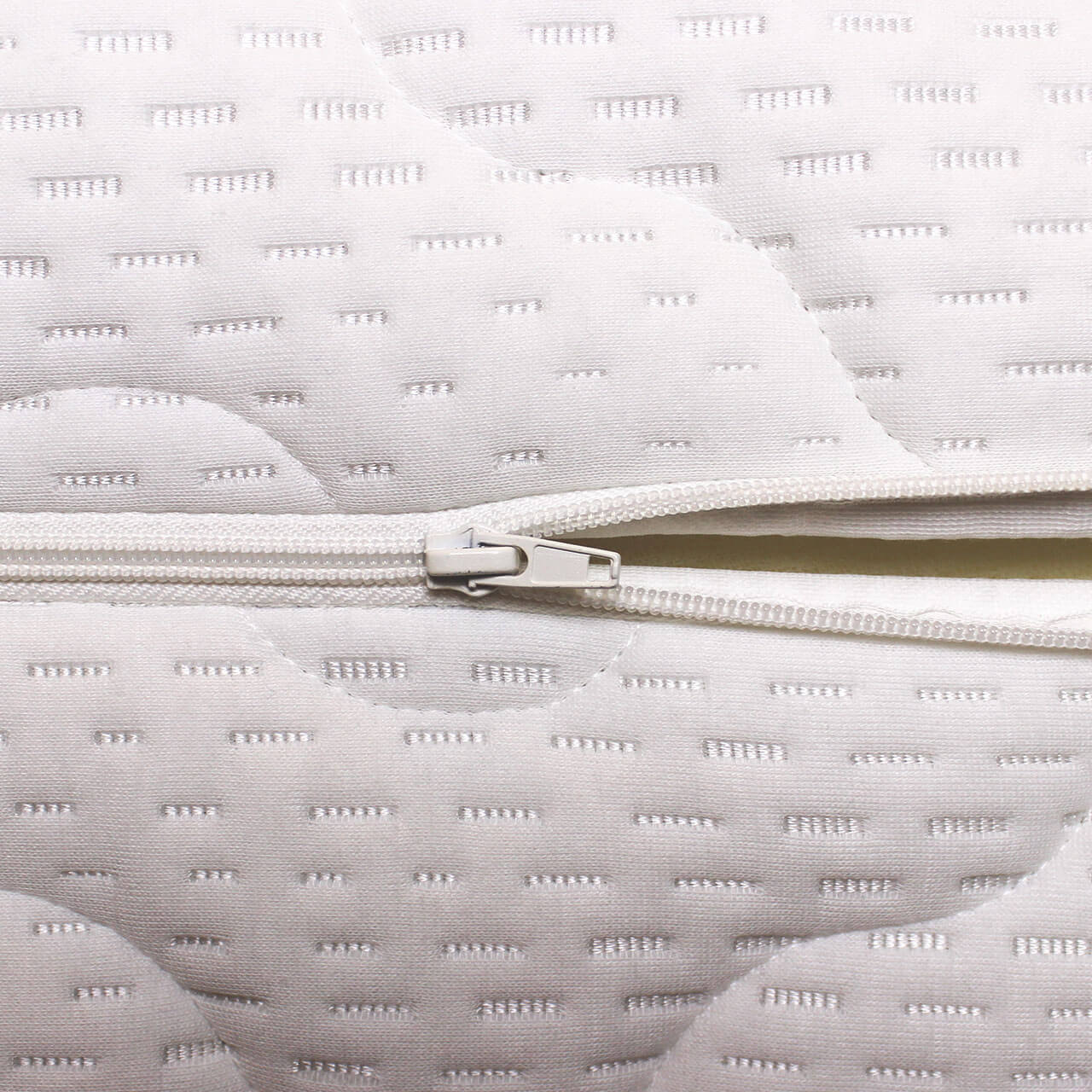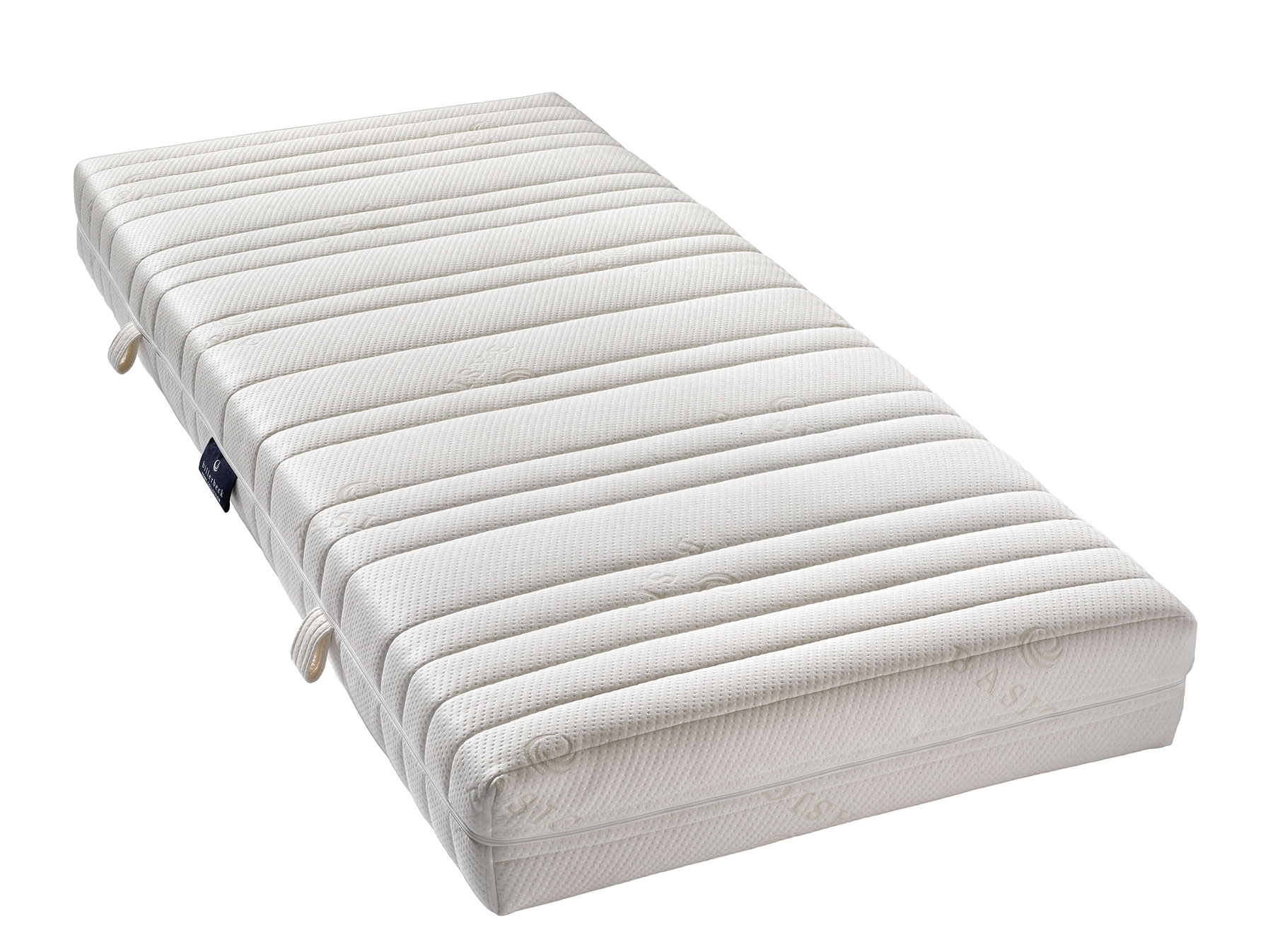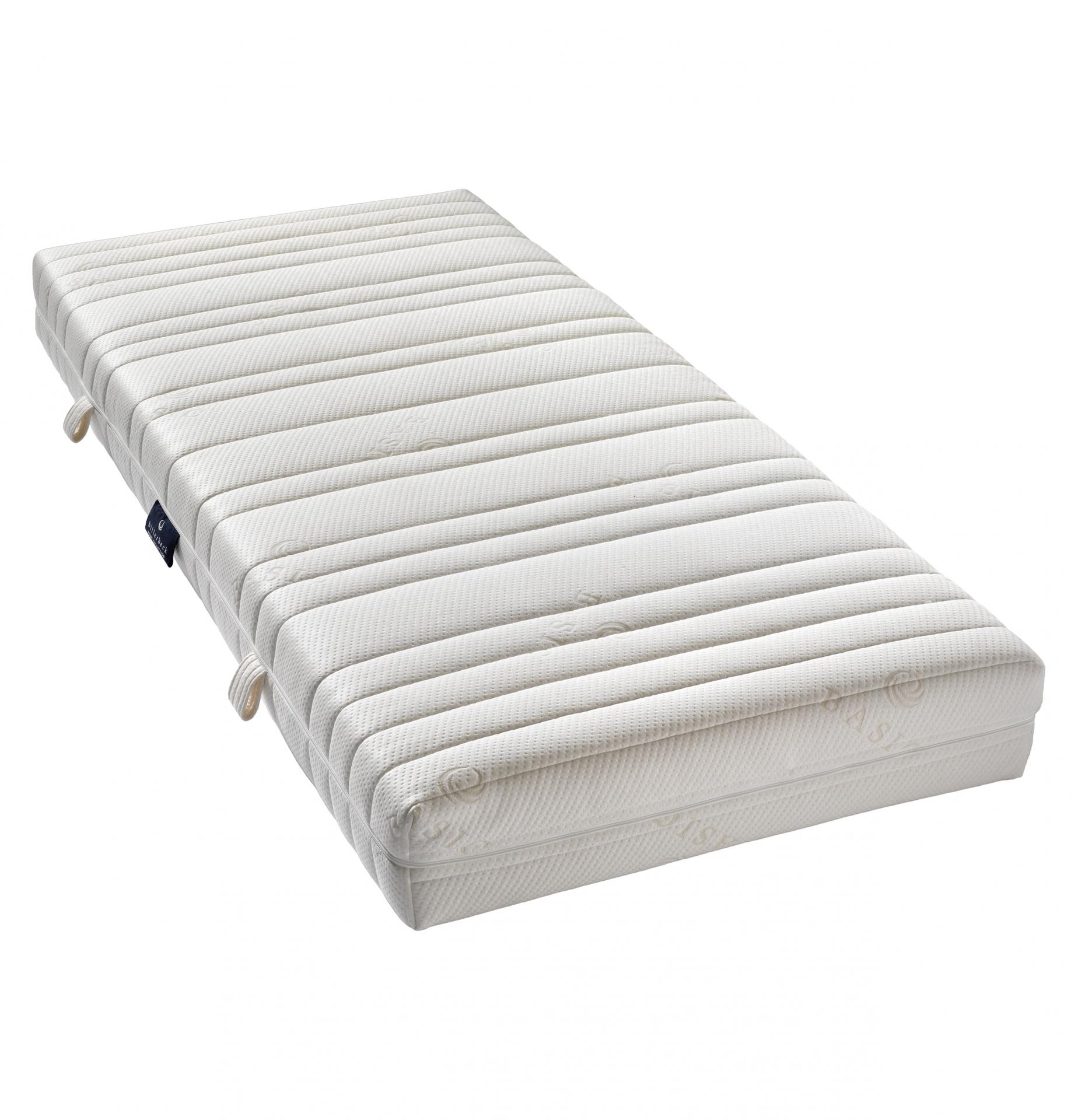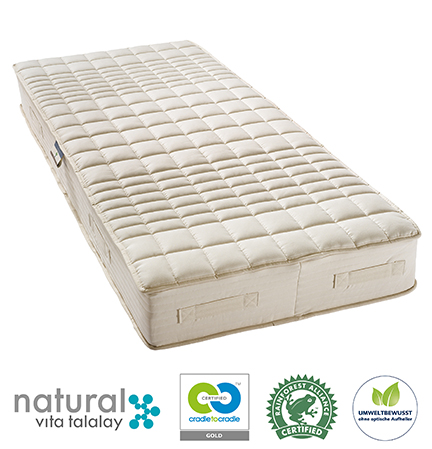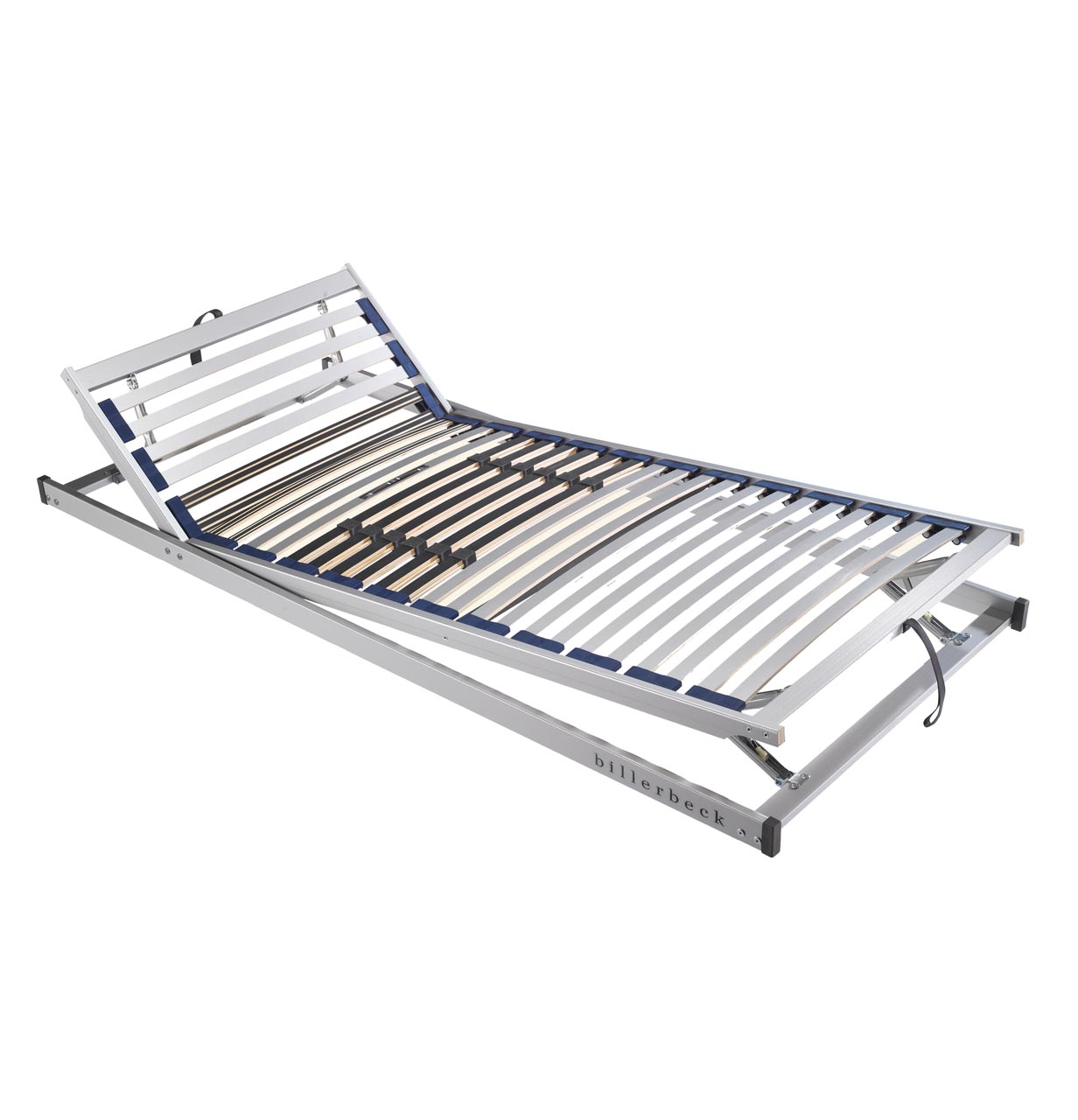Mattress
Your mattress - healthy lying, dreamlike sleep
Especially for the mattress applies the wisdom: "As one beds, so one lies." After all, it carries the entire body weight throughout the night. The perfect mattress relieves the spine and thus also the intervertebral discs and provides the right microclimate that is necessary for healthy sleep. Find out here how to find the best mattress for your needs and what to look for when buying.
Choosing the right mattress for your individual needs is a decisive criterion for restful sleep. The mattress is the backbone of a comfortable sleeping system. It should adapt to the body of the sleeper in the best possible way. Sufficient support of the spine and optimal pressure relief of the shoulder and pelvic area are decisive - even in changing sleeping positions. High point elasticity ensures good distribution of body weight over the entire lying surface. In addition, moisture absorption and air circulation are important, so that excessive sweating is prevented. The demands placed on a mattress depend directly on the personal requirements of the sleeper. These include sleeping position, physique, height, weight, pressure sensation or heat requirement.
A GOOD MATTRESS FOLLOWS THE SHAPE OF THE SPINE IN THE SUPINE POSITION.
Thighs and upper body form a horizontal line. When lying on the side, the shoulders and hips sink into the mattress only so far that the spine forms a horizontal straight line. With an optimal adaptability no pressure points arise. The temperature management prevents heavy sweating or freezing.
Which mattress firmness level is right for you?
The degree of hardness reflects the firmness of the mattress. It is determined by factors such as the material and the height of the mattress. Hardness grades are often given in several levels from soft to hard. However, the degree of hardness is not measurable or standardized. Each manufacturer has its own classification here. It is important, however, that in addition to weight, body size and individual comfort preferences are taken into account. Therefore, the degrees of hardness should rather provide an approximate orientation. Your personal, subjective lying comfort may therefore differ slightly from the recommendation. The most common degrees of hardness are H2 and H3. Hardness grade 4 is rare and hardness grade 1 is usually a special design.
Our recommendation as a rough guide is as follows:
- Hardness grade 2 = medium firm up to approx. 80 kg body weight
- Hardness grade 3 = firm approx. 81-110 kg body weight
- Firmness level 4 = very firm approx. 111-130 kg body weight
Which mattress for which sleeping position?
Side sleepers need an adaptable mattress that allows the hip and shoulder area to sink in deeply. For stomach and back sleepers, the mattress should support the middle of the body.
What are lying zones?
When you lie down, different areas of the mattress are subjected to different loads. These have been divided into seven lying zones. This has the advantage that the physiological shape of the spine is optimally supported in every sleeping position and the respective area is optimally balanced. The lying zones usually run vertically and horizontally symmetrically, so that the mattress can be turned over without any problems.
Accordingly, 7-zone mattresses have four different zones: the head and foot zone, the shoulder and calf zone, the thigh and lordosis zone and the pelvic zone.
The lying zones of a mattress at a glance
- Head zone: Supports the neck, yields moderately.
- Shoulder zone: Shoulder sinks in deeper, therefore it is more elastic.
- Lumbar and lordosis zone: Higher support for the lumbar region.
- Pelvis zone: Allows the pelvis to sink in slightly, therefore softer and more elastic.
- Thigh zone: Stabilising, therefore firmer.
- Calf zone: Elastic and soft due to the low pressure load.
- Foot zone: Gently absorbs the pressure exerted by the feet.
Innerspring mattresses get their lying zones through:
- Different diameters of steel springs
- Different wire thicknesses
- Shape of the spring (bonell, cylinder or barrel)
- Number of coils (number of turns of the spring)
- Foam inserts of different compression hardness in the surrounding foam sheets
- Special incisions on the surface of the surrounding foam sheets
Cold foam and visco foam mattresses obtain their lying zones through:
- Foam inserts and core inserts of different compression hardness.
- Special incisions on the surface of the foam core
- Holes inside the foam core
Mattress core - soft shell, high-tech core
One of the most important distinguishing features of mattresses is hidden: the mattress core. This can be made of foam, latex, natural materials or spring cores and is intended to provide optimum relief for the spine through a special structure. We offer in our assortment the proven mattress cores: cold foam, viscofoam and barrel pocket spring core.
Core height
Core height and core design are clear quality characteristics of mattresses. A higher mattress core and a special core architecture can significantly improve the comfort and ergonomics of the mattress. The core height refers to the height of the mattress interior and is essentially responsible for the overall height.
The cover accounts for only 2-3 cm of the total height, depending on the design. Good mattresses should have a minimum height of 16 cm or more. A greater overall height has a positive effect on the lying feeling and - if the bed frame is of an appropriate height - also makes it easier to get in and out of bed. Foam or visco foam mattresses consist of several layers of different foams.
The greater the height of the individual foam layers of the mattress core, the higher the lying comfort.
What types of mattresses are there?
Foam mattresses in general
A distinction is made here between cold foam and visco foam mattresses. Cold foam mattresses deform due to the pressure of the body weight. The elasticity allows the cold foam to immediately return to its original shape when the pressure is released. Viscous foam mattresses react to body heat. The mattress sinks under the body and returns to its original shape with a time delay. This is why this type of foam is also called "memory foam". The height, the density and the complexity of the core cut are decisive for the comfort and quality of a foam mattress. Foam mattresses are made of open-pored material, which ensures high air permeability and sufficient moisture transport.
Viscoelastic mattresses
Mattresses made of viscoelastic high-tech foam are constructed with a particularly elastic and supportive inner core made of cold foam, with visco foam sheets on the outside. Viscoelastic high-tech foam is also known as memory foam, which reacts to heat and pressure, but returns to its original shape a little later. This foam is particularly pressure-relieving, breathable and suitable for dust mite allergy sufferers.
Cold foam mattresses
Cold foam is also called HR foam (HR from "high resilient") or highly elastic foam. It has a high compression hardness and particularly good point elasticity. This makes cold foam mattresses particularly resilient while at the same time offering outstanding climate properties such as breathability and temperature regulation. In this way, the mattress adapts particularly well to the shape of the body with its centres of gravity.
Barrel pocket spring mattresses
Among the innerspring mattresses, mattresses with barrel pocket springs represent the highest quality class. Barrel pocket spring cores are a special form of pocket spring cores and, thanks to their bulbous shape, react even more sensitively and adaptably to pressure. This allows the mattress to adapt particularly well to the body and optimally compensates for external influences. Barrel pocket spring mattresses have a high breathability and are therefore particularly suitable for people who tend to sweat.
Natural latex mattresses
They provide a soft lying feeling. They have a high adaptability to the body, a good form stability and a great point elasticity. Despite the softness of the material, the body is well supported when lying down. The many small air chambers in the latex foam ensure a good sleeping climate. Latex mattresses have a high density and are relatively heavy. They should have a thicker core as a quality gain. Latex mattresses are offered in different degrees of hardness. They are particularly suitable for side sleepers and people allergic to dust mite.
Choose the right size
Quality mattresses start between 14 and 18 cm high. A mattress width of 90 to 100 cm per sleeper is ideal and the mattress should of course be longer than the sleeper.
- Mattress90 x 190 cm: Fits in the smallest corners and is perfect for smaller people or guests.
- Mattress90 x 200 cm: A popular standard size and perfect for most beds. It fits in single beds just as well as twice in double beds.
- Mattress100 x 200 cm: The extra size ensures a pleasant sleeping experience and is also ideal as a single mattress for double beds in the 200 x 200 cm format.
- Mattress120 x 200 cm: The comfort size offers you sufficient space and freedom of movement to the right and left and is also recommended in the corresponding firmness level for stronger persons.
- Mattress80 x 200 cm: A narrower mattress is ideal for slim people, children or for reasons of space.
- Mattress140 x 200 cm: This size offers sufficient space for sleeping alone. It is then really nice and cosy for two.
- Mattress 160 x 200 cm: It is cosy and comfortable for two people to sleep together. It is also recommended for smaller bedrooms.
What does the density of a mattress mean?
For foam and latex mattresses, the density indicates how heavy a cubic metre of mattress material is in kilograms. The higher the density, the more stable, point-elastic and durable the mattress. However, the volume weights of different types of mattresses cannot be directly compared with each other.
The volume weight describes the weight of the mattress foams in relation to their volume and is an important quality criterion. The volume weight says nothing about the hardness of a mattress, but only about its resilience. The higher the volume weight of a mattress, the higher its quality and durability. The amount of material used is decisive for the density of the mattress. If more water has been added, more air bubbles will form in the foam due to evaporation, resulting in a lower density.
Cold foam mattresses start with a volume weight of at least 30 kg/m³. For particularly high-quality cold foam mattresses or visco foam mattresses, volume weights of 50 kg/m³ are common. Innerspring mattresses should also have a high density in their foam slabs to ensure that the springs do not push through the foam.
Weight (kg
)------------------------------------- = RG (kg/m3)
Length x width x height (m3)
The compression hardness determines the degree of hardness of a mattress.
The compression hardness indicates how much pressure (kilopascal) is required to compress a mattress by 40 percent from its initial state. The higher the compression hardness of a mattress, the firmer the core used and the faster it returns to its original shape when pressure is relieved. If the compression hardness is low, the core is softer and more susceptible to high loads, so that cavities can form.
The degree of hardness of the mattress is determined on the basis of the compression hardness, which should serve as a guide for the consumer.
The right mattress cover
The cover also influences the lying feeling of the mattress. It makes it softer or harder, more breathable, adaptable and durable. It is important that the cover is easy to remove and wash.
We will find the perfect mattress for you!
You can buy the mattress online with us. In addition, for more detailed advice, our experts will be happy to help you in person, by phone or by e-mail.
Tip: You can also order comfortable toppers and matching frames for your mattress online.

 Europa
Europa
 Schweiz
Schweiz
